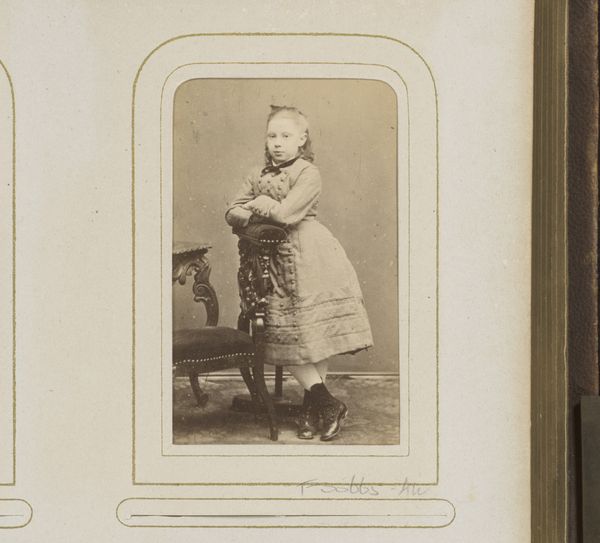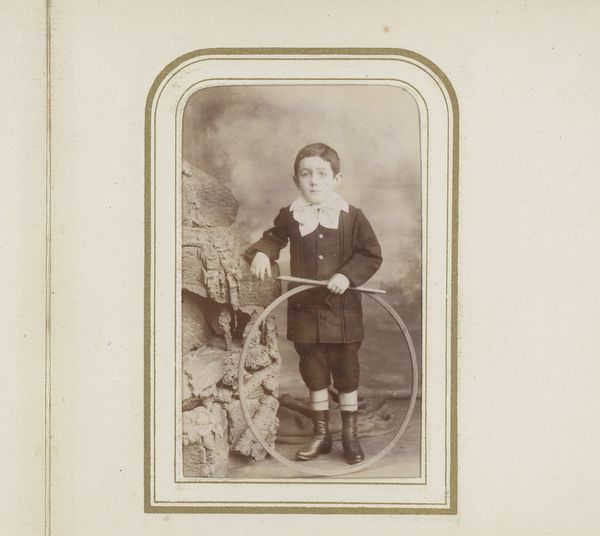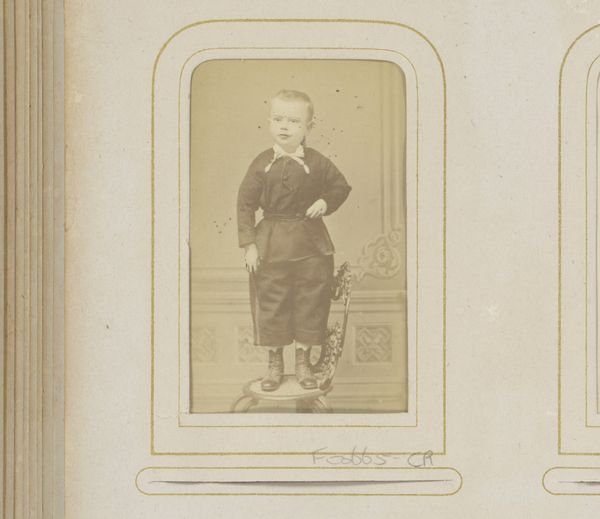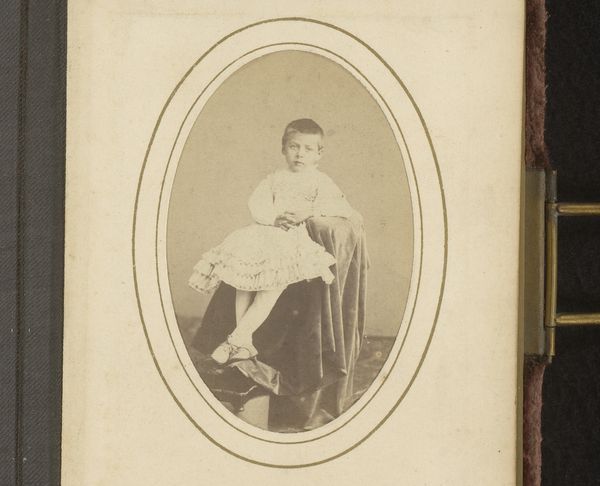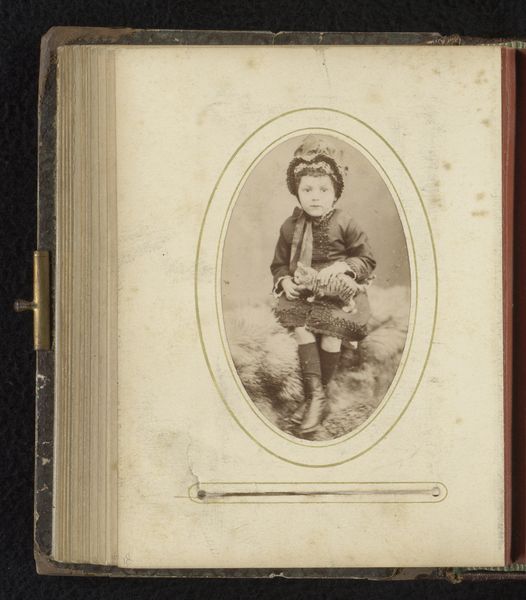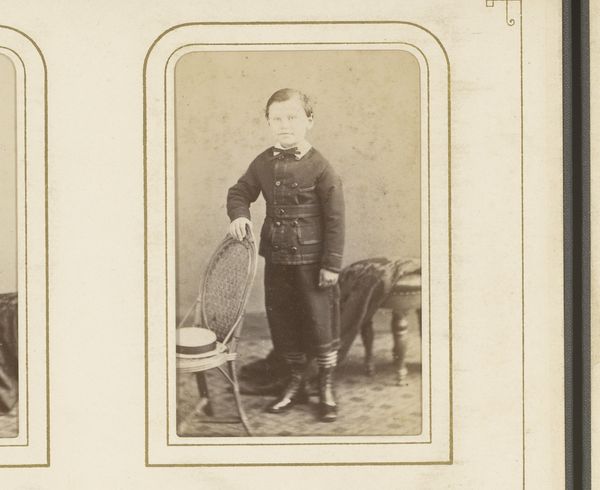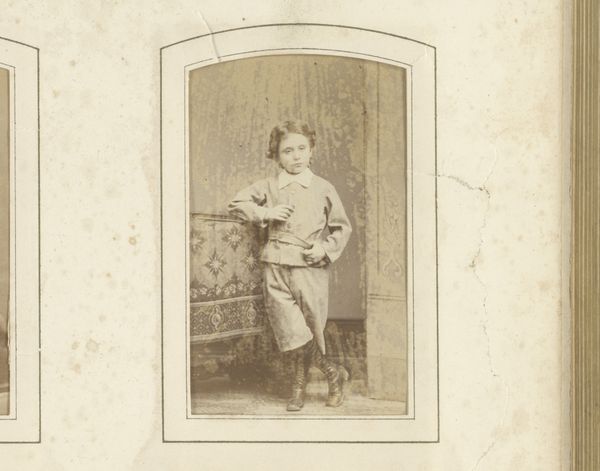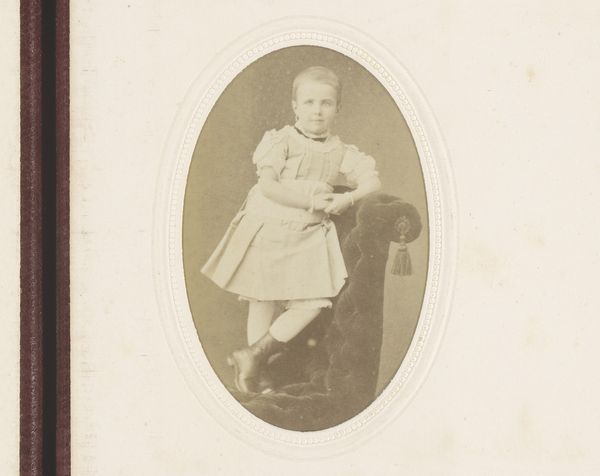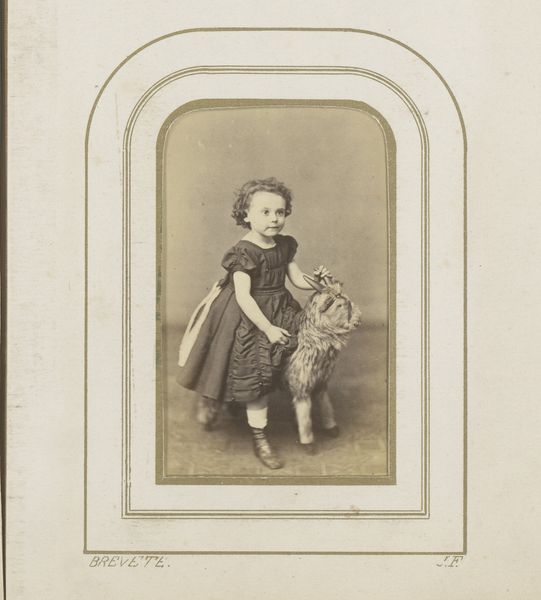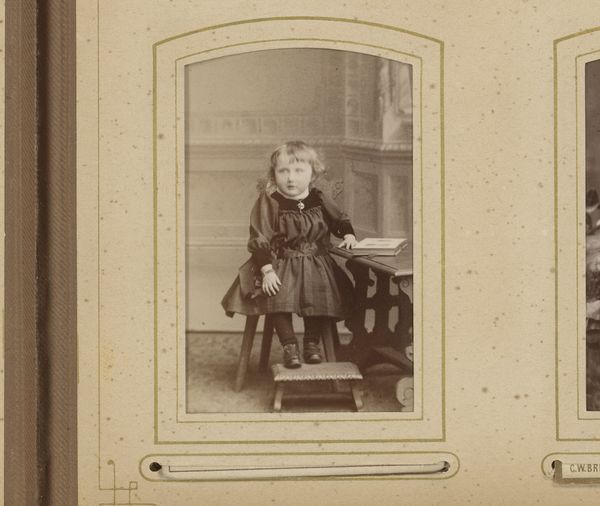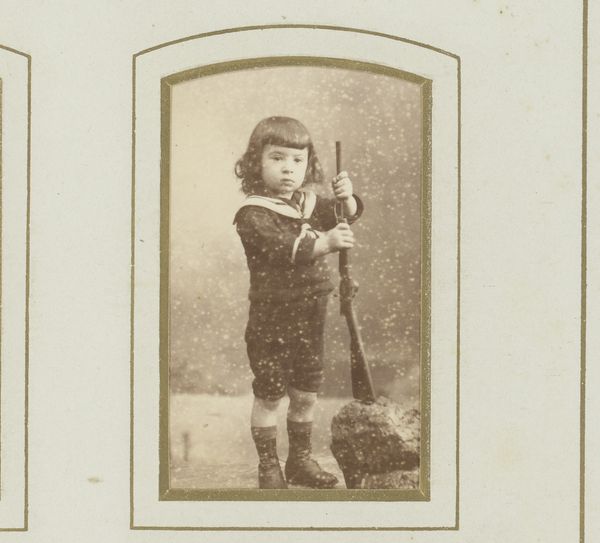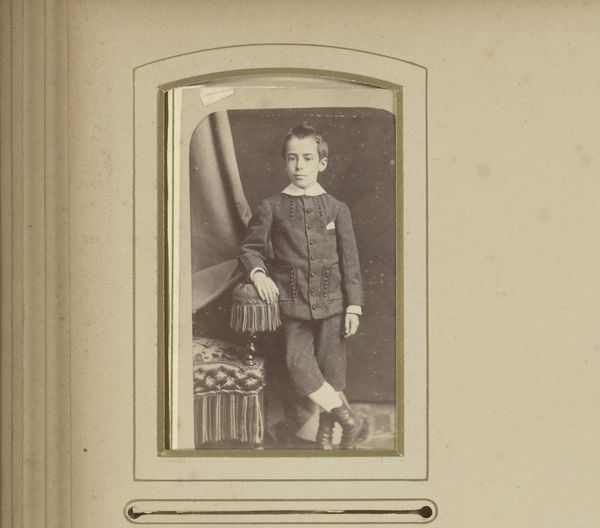
photography
#
portrait
#
photography
#
19th century
Dimensions: height 85 mm, width 52 mm
Copyright: Rijks Museum: Open Domain
Editor: Here we have Henri Blanckart’s "Portrait of a Standing Girl with Hat and Whip," a photographic print from around 1865 to 1870. What strikes me is how formal the presentation is, yet the young girl has a whip. What do you see in this photograph, considering the social context of the time? Curator: Well, that tension you’re picking up on is exactly what I find fascinating! Photography in the mid-19th century was increasingly accessible but still largely seen as a formal medium. Portraits weren't snapshots; they were carefully constructed representations. Think about the role of the elite during that period, and how their social standing shaped identity. The whip seems to me a prop – the hat and interior, as well -- hinting at a leisured upbringing, even power. Editor: Power? From a child? Curator: Think of it more as the aspirational performance of power. Consider also the political landscape then. Is there anything in the composition of the portrait that could mirror society at the time? Editor: Hmm…The starkness, maybe? It isn't as soft as some other portraits I've seen. Curator: Exactly. It echoes the rigid social structures. Photography served as a tool for reinforcing societal norms. This portrait isn't just about this child; it's a document of class, aspiration, and the role of imagery in constructing identity. I wonder what future historians will make of our carefully crafted social media profiles. Editor: That's really interesting. I hadn't considered photography as a tool for reinforcing norms rather than simply documenting life. Curator: Indeed. Looking closely at these images allows us to unravel the complex web of power and representation in the 19th century—and reflect on our own visual legacies.
Comments
No comments
Be the first to comment and join the conversation on the ultimate creative platform.

